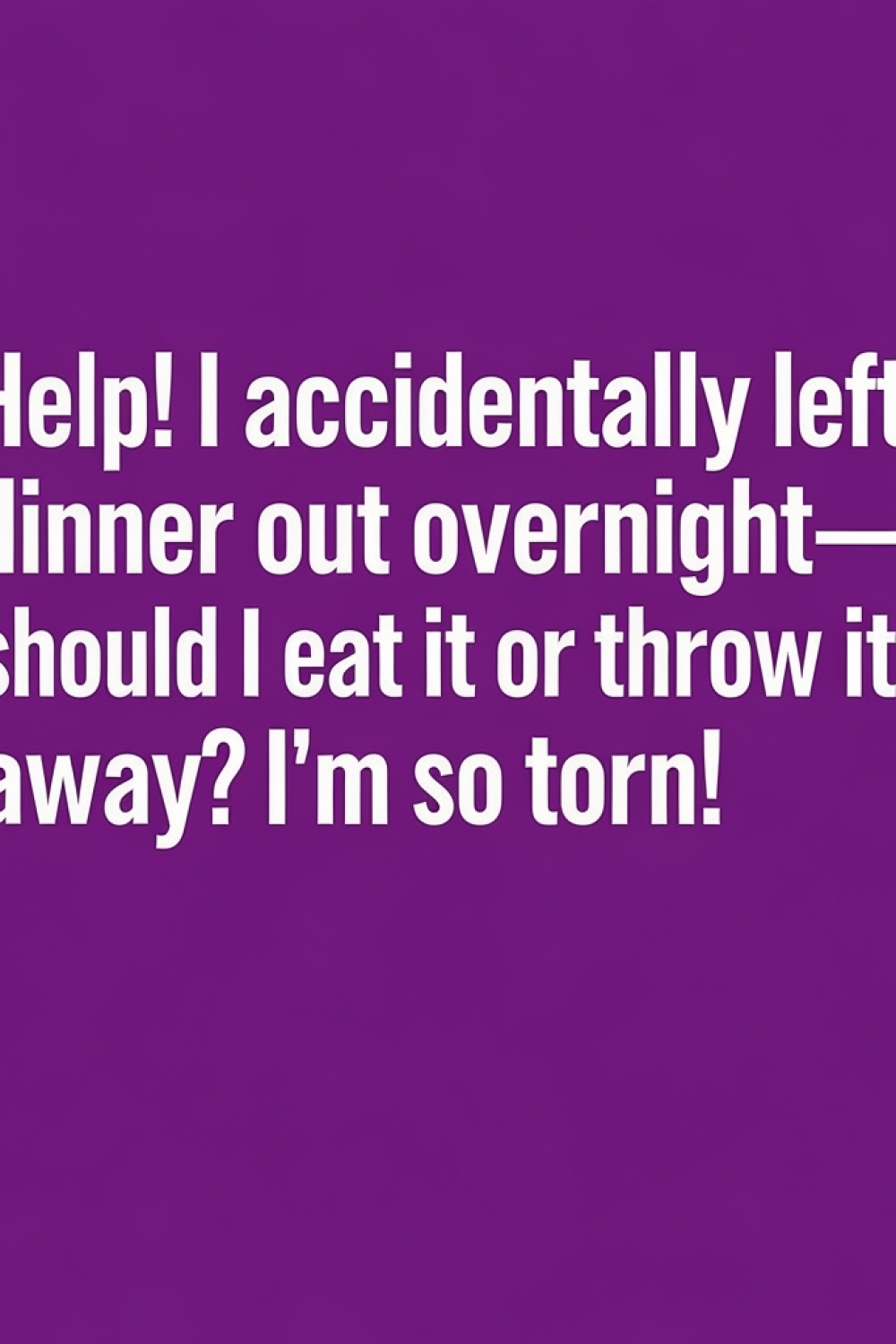Want to save this recipe?
Enter your email below and we’ll send the recipe straight to your inbox!
We’ve all been there – you make a delicious dinner, get distracted, and suddenly it’s morning and your food has been sitting out all night. Now you’re faced with the dilemma: is it safe to eat, or should you toss it? This common kitchen mishap doesn’t always mean your food is destined for the trash. Let’s explore how to determine if that forgotten food is still safe to consume.
How to Determine if Food Left Out Overnight is Safe
The 2-Hour Rule: Your First Assessment
The USDA and food safety experts recommend the “2-hour rule” as your primary guideline. Perishable foods should not remain in the “danger zone” (40°F-140°F or 4°C-60°C) for more than 2 hours. After 2 hours, bacteria can multiply to dangerous levels. If food has been left out overnight (typically 8+ hours), it has far exceeded this safety window.
However, not all foods are created equal when it comes to food safety. Here’s how to assess different types of foods:
1. Assess by Food Type
High-Risk Foods (Almost Always Discard):
- Meats (raw or cooked) including poultry, fish, and seafood
- Dairy products (milk, soft cheeses, yogurt, cream)
- Eggs and egg-based dishes
- Cooked rice and pasta
- Cut melons, tomatoes, and leafy greens
- Cooked vegetables
- Soups and stews
Medium-Risk Foods (Evaluate Carefully):
- Hard cheeses (cheddar, Swiss)
- Butter
- Fresh, whole fruits with intact peels
- Bread, cakes (without cream)
- Jams and jellies
Low-Risk Foods (Generally Safe):
- Cookies, crackers, chips
- Dried fruits and nuts
- Uncooked rice, pasta, and grains
- Bread (without dairy)
- Pickled foods
- Many condiments (ketchup, mustard, soy sauce)
- Uncut fruits with intact peels
2. Check for Signs of Spoilage
Even if a food falls into the “medium-risk” category, you should carefully examine it for:
- Off smells: Trust your nose. Sour, rancid, or unusual odors indicate spoilage.
- Visual changes: Mold, sliminess, unusual coloration, or texture changes are warning signs.
- Texture changes: Stickiness, excessive softness, or unusual firmness can indicate bacterial growth.
- Taste (with caution): If the food passes visual and smell tests, a tiny taste might reveal spoilage. However, this is not recommended for high-risk foods like meat, as harmful bacteria may not change the taste.
3. Consider Environmental Factors
- Room temperature: Was it a cool night (below 65°F/18°C) or warm (above 70°F/21°C)?
- Covering: Was the food covered or exposed?
- Preparation: Foods with preservatives may last longer than freshly prepared foods.
- Acidity: Highly acidic foods (pH below 4.6) like pickles or vinegar-based dishes resist bacterial growth better.
4. Make Your Decision
When to Definitely Discard:
- Any high-risk food left out overnight
- Any food with visible mold or signs of spoilage
- Any food that smells off or has changed texture
- Room temperature was warm (above 70°F/21°C)
- Food was uncovered in a non-clean environment
When It Might Be Safe:
- Low-risk foods without signs of spoilage
- Some medium-risk foods in a cool room with no spoilage signs
Special Cases and Considerations
Bread Products
Bread typically doesn’t become unsafe overnight but may become stale. It’s generally safe unless you see mold growing. Bread with dairy fillings (cream cheese, custard) should be treated as high-risk.
Fruits and Vegetables
Whole, uncut fruits and vegetables with intact peels/skins are generally safe. Once cut or peeled, they become more susceptible to bacteria and should follow the 2-hour rule.
Cooked Rice and Pasta
These deserve special mention because many people don’t realize they’re high-risk foods. Bacillus cereus, a bacteria that can cause food poisoning, can form heat-resistant spores that survive cooking. When left at room temperature, these spores can grow and produce toxins that aren’t eliminated by reheating.
Oils and Condiments
Most condiments contain preservatives and are acidic enough to prevent rapid bacterial growth. Oils are generally safe if not mixed with water or fresh herbs.
Prevention is Better Than Assessment
To avoid future overnight food incidents:
- Set a timer when cooking or eating
- Clean up immediately after meals
- Designate someone to put food away during gatherings
- Package leftovers in smaller portions for quicker cooling
- Use sticky notes on containers with the date and time they were refrigerated
The “When in Doubt, Throw it Out” Rule
Food safety experts universally agree: when in doubt, throw it out. Food poisoning can cause severe illness, and the cost of replacing food is almost always less than the cost of medical care or lost work time due to illness. This is especially important for:
- Pregnant women
- Young children
- Elderly individuals
- People with compromised immune systems
- Those with chronic illnesses
What About Reheating?
Contrary to popular belief, reheating food that has been left out overnight won’t necessarily make it safe. While heat kills many bacteria, some bacteria produce heat-resistant toxins that remain even after thorough reheating. This is why the time in the danger zone matters more than subsequent cooking.
Food Waste Concerns
Many people hesitate to discard food due to concerns about waste. Consider these alternatives for foods you must discard:
- Compost non-meat items
- Use for garden fertilizer
- Feed appropriate scraps to backyard chickens or livestock
- Make a commitment to better food storage practices going forward
Deciding whether food left out overnight is safe requires assessing the type of food, environmental conditions, and visible signs of spoilage. While it’s disappointing to throw food away, remember that food safety should always take priority over avoiding waste. By following proper food storage practices in the future and quickly refrigerating leftovers, you can minimize both food waste and safety concerns in your kitchen.

